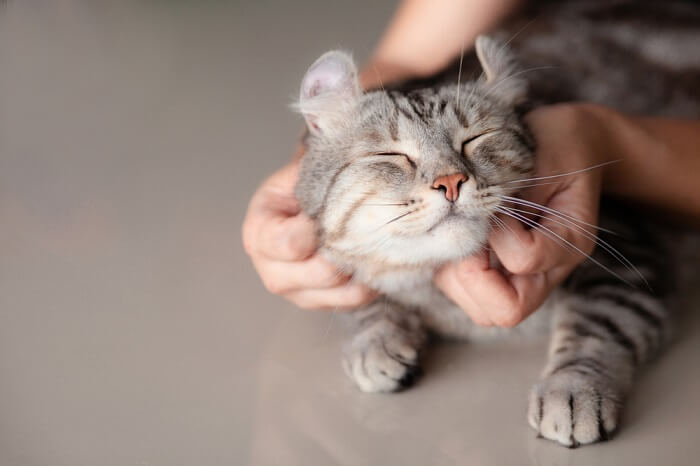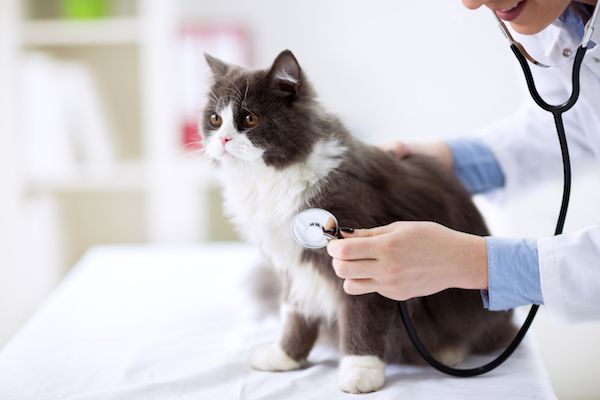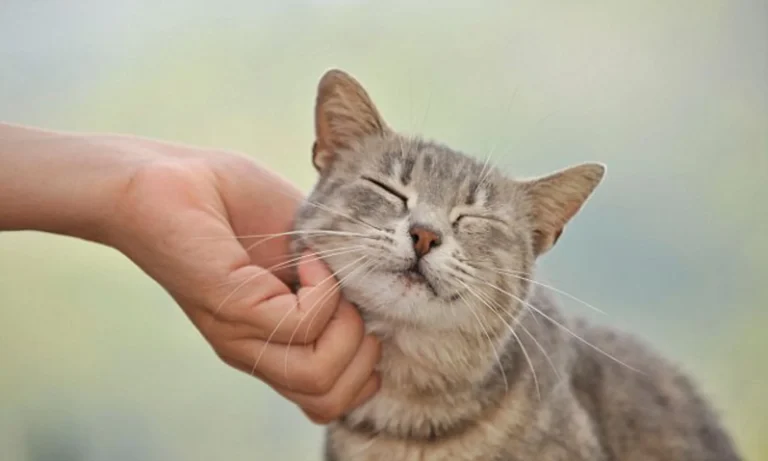Handling everyday cat health issues
Signs of a Healthy Cat
A healthy cat is a happy cat, and as a responsible cat parent, it is essential to be aware of the signs that indicate your feline companion is in good health. Firstly, a healthy cat will possess a shiny and well-groomed coat. By keeping themselves clean, cats not only ensure their fur remains sleek and glossy but also minimize the presence of parasites and other unwelcome guests. A silky coat free from mats and tangles is a positive sign of a cat’s overall well-being.
Another sign of a healthy cat is bright and clear eyes. Healthy cats have eyes that are free from discharge, redness, or excessive tearing. The pupils should be of equal size and responsive to light. An alert and curious gaze is a positive indicator that your feline friend is feeling well. Furthermore, a healthy cat will have clean and odorless ears. Regularly inspect your cat’s ears for any signs of dirt or wax buildup. If the ears are pale pink and free from any discharge or foul odor, it is a positive indication that your cat’s ears are healthy.
Common Cat Health Issues
Cats, like any other living being, can encounter various health issues throughout their lives. It is important for cat owners to be aware of these common health problems to ensure the well-being of their feline companions. One of the most prevalent health issues among cats is urinary tract infections. This is a condition characterized by inflammation and infection in the urinary system of the cat, causing symptoms such as frequent urination, blood in the urine, and discomfort. Although urinary tract infections can affect cats of any age, they are more commonly seen in older cats and those with a weakened immune system. Prompt veterinary attention and treatment are crucial to prevent complications and provide relief for the cat.
Another health issue often encountered with cats is dental disease. Poor dental hygiene and lack of regular dental care can lead to a range of dental problems for our feline friends. Periodontal disease, tartar buildup, and tooth decay are among the most common dental issues in cats. If left untreated, dental problems can cause pain, difficulty eating, bad breath, and even more severe health issues if the infection spreads to other areas of the body. Regular dental check-ups, teeth brushing with cat-safe toothpaste, and providing appropriate dental treats can help to maintain good oral health and prevent dental issues for our beloved furry companions.
Preventing Cat Hairballs
Cat hairballs can be a common occurrence for many cat owners. When cats groom themselves, they inevitably ingest fur, which can then accumulate in their stomachs and form hairballs. While hairballs are generally harmless, they can be a cause of discomfort for cats, leading to vomiting, lack of appetite, and even digestive issues. Therefore, it is important for cat owners to take preventive measures to reduce the occurrence of hairballs and ensure the well-being of their feline companions.
One effective way to prevent hairballs is by regularly brushing your cat’s fur. By brushing your cat at least once a week, you can help to remove loose hair that would otherwise be ingested during grooming. Pay special attention to areas where your cat tends to shed the most, such as the back and sides. Additionally, consider using a grooming tool specifically designed to reduce shedding, such as a deshedding brush or grooming gloves, as these can be particularly effective in removing excess fur. Regular grooming not only aids in preventing hairballs but also helps to keep your cat’s fur healthy and shiny.
Understanding Cat Dental Health
Dental health plays a crucial role in maintaining the overall well-being of your cat. Just like humans, cats can also develop dental issues if proper care is not taken. One of the most common dental problems in cats is periodontal disease, which can lead to pain, infection, and tooth loss if left untreated.
Regular dental care for your cat is essential to prevent dental problems. Brushing your cat’s teeth regularly with a toothbrush and toothpaste specifically designed for cats is the most effective way to remove plaque and tartar buildup. However, if your cat is not accustomed to teeth brushing, you can also provide dental treats or dental toys that help in reducing plaque and tartar. In addition to regular brushing, it is recommended to schedule routine dental check-ups with your veterinarian to identify and address any potential dental problems early on. By maintaining your cat’s dental health, you can ensure their comfort and prevent the development of more serious health issues.
Managing Cat Obesity
Obesity is a serious health concern among cats, just like it is for humans. Excess weight can lead to a range of problems, including heart disease, diabetes, and joint issues. It is important for cat owners to take proactive measures to manage their feline companion’s weight.
The first step in managing cat obesity is to assess their current diet. Feeding a balanced and portioned diet is crucial. Consult with your veterinarian to determine the appropriate amount of food for your cat based on their age, activity level, and overall health. It is also important to choose high-quality cat food that is specifically formulated for weight management. Avoid overfeeding or giving in to their pleading eyes, as this can quickly contribute to weight gain.
Dealing with Cat Allergies
Cat allergies can be a bothersome and challenging issue for cat owners. Allergic reactions to cats are usually caused by a protein called Fel d 1, which is found in cat saliva, urine, and dander. When a person with allergies comes into contact with these allergens, they may experience symptoms such as sneezing, itchy and watery eyes, coughing, and even difficulty breathing. However, there are some steps that can be taken to minimize and manage cat allergies.
One of the first steps in dealing with cat allergies is to create a cat-free zone in your home, preferably in the allergic person’s bedroom. This area should be off-limits to the cat, with a door and good airflow to prevent allergens from circulating. Regular vacuuming and dusting can help remove cat dander from furniture and carpets, reducing the amount of allergens present in the environment. Additionally, using high-efficiency particulate air (HEPA) filters in the home can help capture airborne allergens and improve indoor air quality.
Recognizing Cat Respiratory Problems
Cats, like humans, can experience respiratory problems that affect their breathing and overall health. It’s important for cat owners to be familiar with the signs and symptoms of respiratory issues, so they can seek proper veterinary care when needed.
One common sign of respiratory problems in cats is coughing or wheezing. If your cat is having trouble breathing or you notice a persistent cough, it may indicate an underlying issue such as asthma, bronchitis, or an upper respiratory infection. Additionally, if you observe any changes in your cat’s breathing pattern, such as rapid or shallow breathing, it could be a sign of a more serious respiratory problem that requires immediate attention. Other signs to watch out for include sneezing, nasal discharge, or difficulty breathing through the nose. If you notice any of these symptoms in your cat, it’s important to consult with a veterinarian to determine the cause and appropriate treatment plan.
Caring for your Cat’s Eyes and Ears
Cats have incredibly sensitive and expressive eyes, which require regular care and attention. Keeping your cat’s eyes clean is vital to their overall health and well-being. Dust, debris, and even bacteria can accumulate in the corners of their eyes, leading to irritation and potential infection. To clean your cat’s eyes, use a soft, clean cloth dampened with warm water. Gently wipe away any discharge or debris from the outer corners towards the inner corners. Take care not to touch the eyeball directly or use any harsh cleaning solutions that could irritate their delicate eyes. If you notice any excessive tearing, redness, or swelling, it’s essential to consult with a veterinarian as these may be signs of an underlying eye condition that requires professional attention.
In addition to their eyes, a cat’s ears also require regular maintenance. Cats have incredibly acute hearing, and their ears are designed to catch even the faintest of sounds. However, their ears can also accumulate dirt, wax, and other debris that may lead to discomfort or even infection. To clean your cat’s ears, gently fold back the ear flaps and use a cotton ball dampened with a veterinarian-recommended ear cleaning solution. Carefully wipe the cleaner along the inner surfaces, avoiding the ear canal. Never insert anything deep into the ear canal, as this can cause injury. If there is a foul odor, discharge, or your cat seems to be experiencing pain or constant scratching, it’s crucial to seek professional advice from your veterinarian, as these could be signs of an underlying ear infection or another issue.
How can I tell if my cat has a healthy eyes and ears?
Signs of a healthy cat’s eyes include clear and bright pupils, absence of discharge or redness, and normal blinking. Healthy ears will have a pale pink color, no odor, and no excessive wax or debris.
What are some common health issues related to a cat’s eyes and ears?
Some common eye issues in cats include conjunctivitis, cataracts, and glaucoma. Common ear problems include ear mites, infections, and allergies.
How can I prevent my cat from getting hairballs that may affect their eyes and ears?
Regular grooming, such as brushing your cat’s fur, can help prevent hairballs. Feeding your cat a specialized hairball control diet and providing them with plenty of water can also minimize hairball formation.
Why is dental health important for my cat’s eyes and ears?
Poor dental health can lead to bacterial infections that may spread to the eyes and ears. Regular brushing, dental check-ups, and a balanced diet can help maintain your cat’s dental health.
How can I manage my cat’s weight to ensure their eyes and ears stay healthy?
Providing a balanced diet, portion control, and engaging your cat in regular exercise can help manage their weight. Consult with a veterinarian for specific dietary recommendations.
What should I do if my cat is experiencing allergies that affect their eyes and ears?
If your cat is showing signs of allergies, such as redness or discharge in the eyes and ears, consult with a veterinarian for appropriate treatment options. Avoiding allergens and keeping your cat’s environment clean can also help.
What are some signs of respiratory problems in cats that may impact their eyes and ears?
Signs of respiratory issues in cats may include sneezing, coughing, nasal discharge, labored breathing, and wheezing. These problems can sometimes lead to secondary issues affecting the eyes and ears.
How can I properly care for my cat’s eyes and ears?
Regularly clean your cat’s eyes and ears with a veterinarian-approved solution. Avoid using cotton swabs or any sharp objects. If you notice any abnormalities or signs of discomfort, seek veterinary attention promptly.







